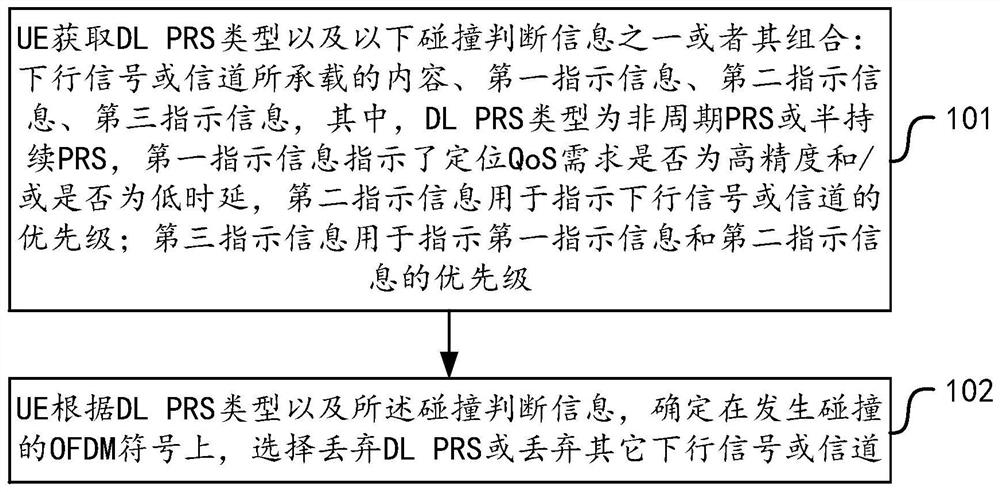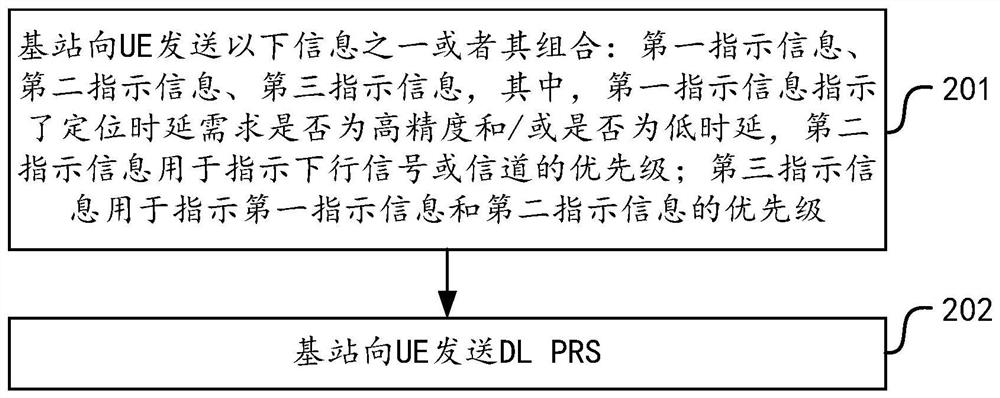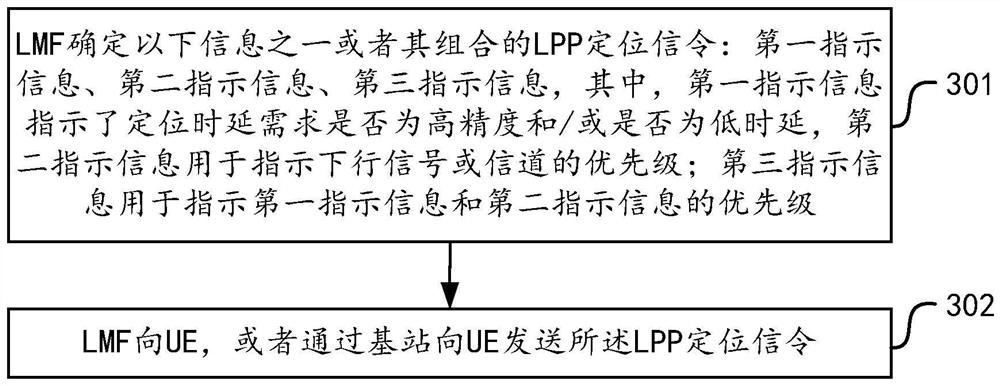Collision processing and indicating method, equipment, device and medium
A processing method and a technology of indicating information, which are applied to the separation device of the transmission path, signaling distribution, digital transmission system, etc., to achieve the effect of reducing the positioning delay and improving the positioning accuracy
- Summary
- Abstract
- Description
- Claims
- Application Information
AI Technical Summary
Problems solved by technology
Method used
Image
Examples
Embodiment 1
[0155] In this embodiment, the UE performs processing based on the DL PRS type and the first indication information.
[0156] UE side:
[0157] 1. The UE obtains information such as the DL PRS type, SSB, content carried by the PDCCH or PDSCH, first indication information, and the like according to predefined criteria in the protocol or signaling configuration. Wherein, the DL PRS type includes aperiodic PRS and semi-persistent PRS; the first indication information is used to indicate positioning QoS requirements, for example: at least one item of low latency requirements, high precision requirements and high reliability requirements.
[0158] The foregoing first indication information may be notified to the UE through various signaling. These signalings may be LPP positioning signaling, RRC signaling, MAC-CE signaling or DCI signaling, and the MAC-CE or DCI signaling may further update the configuration of the previous LPP positioning signaling or RRC signaling.
[0159] 2. ...
Embodiment 2
[0175] In this embodiment, the UE performs processing based on the DL PRS type and the second indication information.
[0176] UE side:
[0177] 1. The UE obtains information such as DL PRS type, SSB, content carried by the PDCCH or PDSCH, second indication information, and the like according to predefined criteria in the protocol or signaling configuration. Among them, the DL PRS type includes aperiodic PRS and semi-persistent PRS; the second indication information refers to the information used to indicate the downlink signal / channel priority; the third indication information refers to the information used to indicate the first indication information and the second indication information priority information.
[0178] The signaling of the above three indication information can be LPP positioning signaling, RRC signaling, MAC-CE signaling or DCI signaling, and the MAC-CE or DCI signaling can further update the previous LPP positioning signaling or RRC signaling configuratio...
example 1
[0186] The first predefined priority list is as follows (the basic idea is that the broadcast signal / channel has the highest priority):
[0187] First priority: Downlink broadcast signal / channel type 1——SSB (the SSB here includes the SSB of the current cell and the SSB of the adjacent cell notified in the positioning configuration message);
[0188] The second priority: downlink broadcast signal / channel type 2 - periodic PRS, CORESET#0 (ie RMSI), SI-RNTI and P-RNTI scrambled PDCCH scheduled PDSCH;
[0189] The third priority: downlink unicast signal / channel type 1 - aperiodic PRS;
[0190] Fourth priority: downlink unicast signal / channel type 2 - semi-persistent PRS;
[0191] Fifth priority: Downlink unicast signal / channel type 3——except CORESET#0, other CORESETs, RA-RNTI scrambled PDCCH scheduled PDSCH, C-RNTI scrambled PDCCH scheduled PDSCH, CSI-RS and PT-RS etc.
[0192] The collision handling schemes according to the above priorities are shown in Table 1 and Table 2.
...
PUM
 Login to View More
Login to View More Abstract
Description
Claims
Application Information
 Login to View More
Login to View More - R&D
- Intellectual Property
- Life Sciences
- Materials
- Tech Scout
- Unparalleled Data Quality
- Higher Quality Content
- 60% Fewer Hallucinations
Browse by: Latest US Patents, China's latest patents, Technical Efficacy Thesaurus, Application Domain, Technology Topic, Popular Technical Reports.
© 2025 PatSnap. All rights reserved.Legal|Privacy policy|Modern Slavery Act Transparency Statement|Sitemap|About US| Contact US: help@patsnap.com



